External USB/Thunderbolt drives are a super convenient way to quickly back up your vital files, as well as store any data that might overflow your internal storage. They’re also a handy way to transport said data between locations and devices.
But backup is the reason your rig is not complete without one (or more). Why? Chances are that you have important data on your PC that you don’t want, or can’t afford, to lose. To protect that data you’ll of course want to store it off-site on the cloud if possible and back it up to an external drive for sure.
Restoring from local storage is generally far, far faster than pulling your data down from the cloud, hence an external drive should be your primary hedge against disaster.
As to overflow, files continually increase in size and number, especially when it comes to video, so many users are all but guaranteed to eventually need more storage. External drives are the easiest way to expand capacity, in addition to covering your toukus in case of disaster.
PCWorld constantly tests new external USB/Thunderbolt drives. Comparing the results, we provide expert recommendations for everything from blazing-fast performance, to the most frugal options, to portability, while considering every factor in between. The winners join the curated list below.
If you want to bone up on the whys and wherefores of external storage shopping, you’ll
Samsung T7 Shield – Best performance USB drive
Pros
- Fast 1GBps sustained transfers
- Excellent real world performance
- Vast 4TB capacity
- Svelte and handsome
Cons
- Not cheap
- Small 4K performance glitch under CrystalDiskMark 8 writing 4K files
We’re fans of the original Samsung T7 Shield, but we’re ever bigger fans of the larger capacity 4TB version (See what we did there?). With far more room for stuff than the previous 1TB and 2TB versions, it still plays to the company’s excellent track record of speed and durability established by earlier iterations.
The T7’s predecessor, the Samsung Touch distinguished itself with a fingerprint reader for data security, but the Shield models lean towards physical protection, with IP65 ratings against particulate matter and water spray. Going hiking with your data? A T7 Shield is a good choice, and you can secure it with software-based password protection in lieu of a fingerprint.
While the 4TB model is capable of handling the largest end-user data sets, it’s also a bit pricey. If you don’t need that much storage, go with the more affordable 1TB or 2TB capacities–all T7 Shields boast 10Gbps transfer speeds, which is always a nice speed boost over older 5Gbps external drives.
Read our full
Samsung T7 4TB review
SanDisk Extreme Pro Portable SSD – Best performance drive runner-up

Pros
- Overall fastest USB SSD currently available
- Relatively affordable
- IP55 rated against dust and mild streams of water
Cons
- Slightly slower reading files than Samsung’s T7
While we’ve demoted SanDisk’s Extreme Pro Portable SSD (1TB) to runner-up status in light of the Samsung T7’s newly improved write speeds, make no mistake–it’s still one the fastest, handsomest USB 3.1 Gen 2 (10Gbps) external SSDs we’ve tested to date. It’s slightly more expensive than the T7 Shield, at $190 for 1GB and $300 for 2GB, and it’s rated at “only” IP55, meaning there’s slightly less protection from the elements. But it’s still an excellent product.
Note: There are faster USB 3.2 2×2 (also known as SuperSpeed 20Gbps) SSDs available, such as the WD Black P50 and Seagate Barracuda Fast SSD. However, SuperSpeed 20Gbps and USB4 ports are still rare, so it might not matter to you.
Read our full
SanDisk Extreme Pro Portable SSD review
WD Black P50 Game Drive SSD (1TB) – Best for gaming

Pros
- Up to 2GBps with SuperSpeed USB 20Gbps
- Distinctively militaristic styling
Cons
- Pricey compared to SuperSpeed 10Gbps drives
- Requires the extremely rare SuperSpeed USB 20Gbps port for full performance
Today’s games can soak up 50GB or 100GB of storage and more. If you’re looking for a drive to quickly load those larger games (as well as subsequent levels) from your gaming laptop, we recommend WD’s Black P50 Game Drive. And no, not just because it’s literally called “Game Drive,” but because we prefer launching games from an SSD to glean every competitive advantage available. Comparatively, hard drives are plodders.
You’ll need a 20Gbps USB port for the Black P50 to hit its 2GBps high notes, but it’s fast (1GBps) even over 10Gbps USB. (Learn more about how we evaluate the best external SSD for gaming.)
Read our full
WD Black P50 Game Drive SSD (1TB) review
Crucial X6 Portable SSD (2TB) – Best budget option

Pros
- Ergonomic design
- Good everyday performance
- Very affordable for an external SSD
Cons
- Performance tanks when cache runs out
The Crucial X6 Portable SSD is square to be hip (search Huey Lewis). Or placed in your hip pocket, at any rate. In a sea of portable SSDs whose shape and sometimes sharp edges makes them a literal pain when situated in your shirt or trousers, the thin, rounded-edge X6 is a sigh of relief. It’s not state-of-the-art fast, but it’s fast enough for most users and extremely affordable.
Read our full
Crucial X6 Portable SSD (2TB) review
Teamgroup M200 – Best budget speedster
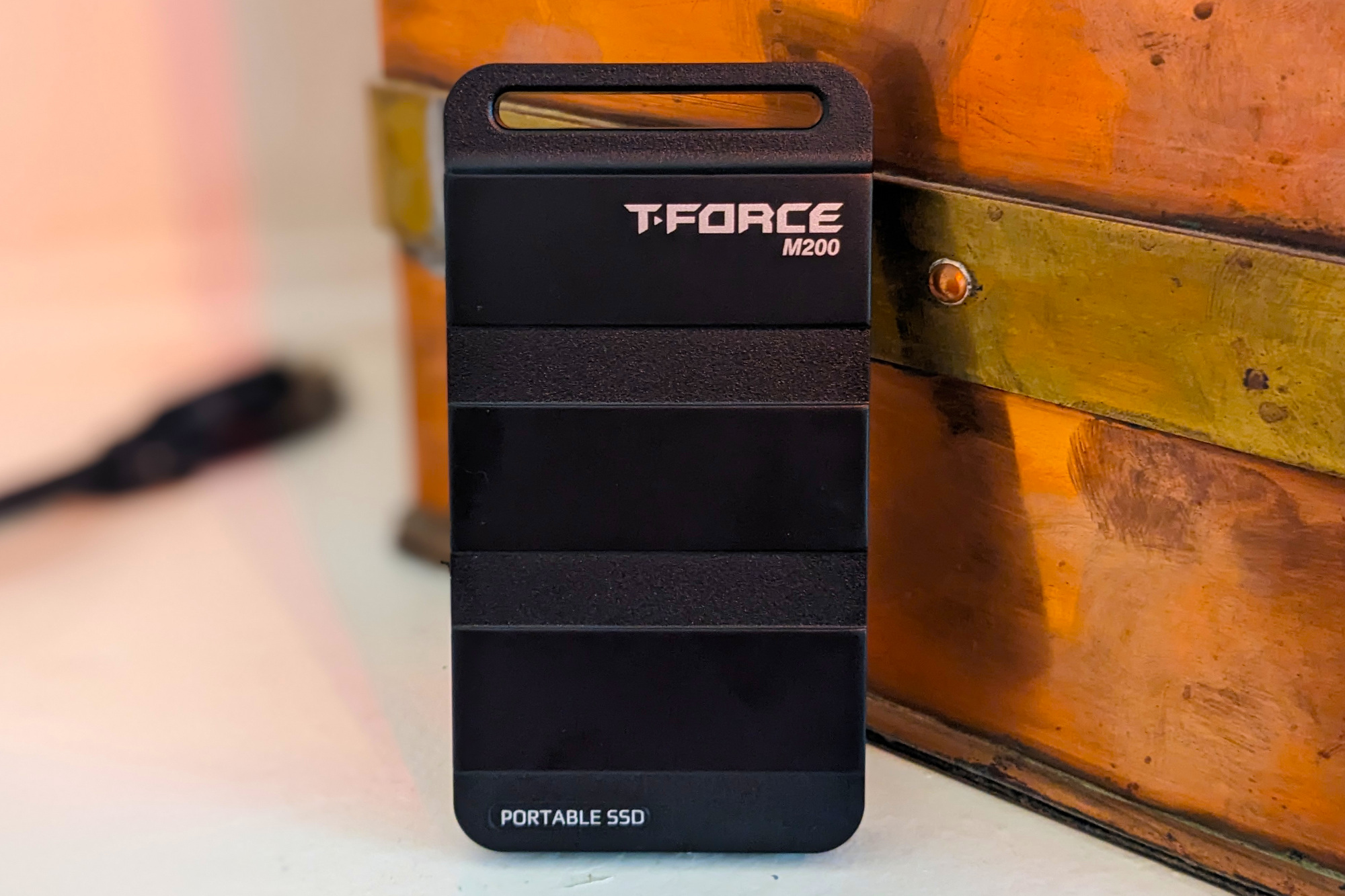
Pros
- Fast everyday performance
- Available in up to 8TB (eventually) capacity
- Attractively styled
Cons
- No TBW rating
- Company will change components if shortages demand
- Writes slow to 200MBps off cache
Rated for 20Gbps and selling for $140 with 1TB of storage, the Teamgroup M200 is an attractive (in a military fashion) external drive for the budget conscious performance enthusiast.
It might not be as cheap as the Crucial X6, but for the extra outlay you get outstanding everyday performance—it’s the fastest 20Gbps drive we’ve ever tested. At just 4.13-inches long and 2.18-inches wide and weighing under 3 ounces, it’s also extremely portable and its slick styling will appeal to gamers.
Read our full
Teamgroup T-Force M200 20Gbps USB SSD review
Adata Elite SE880 SSD – Most portable external drive
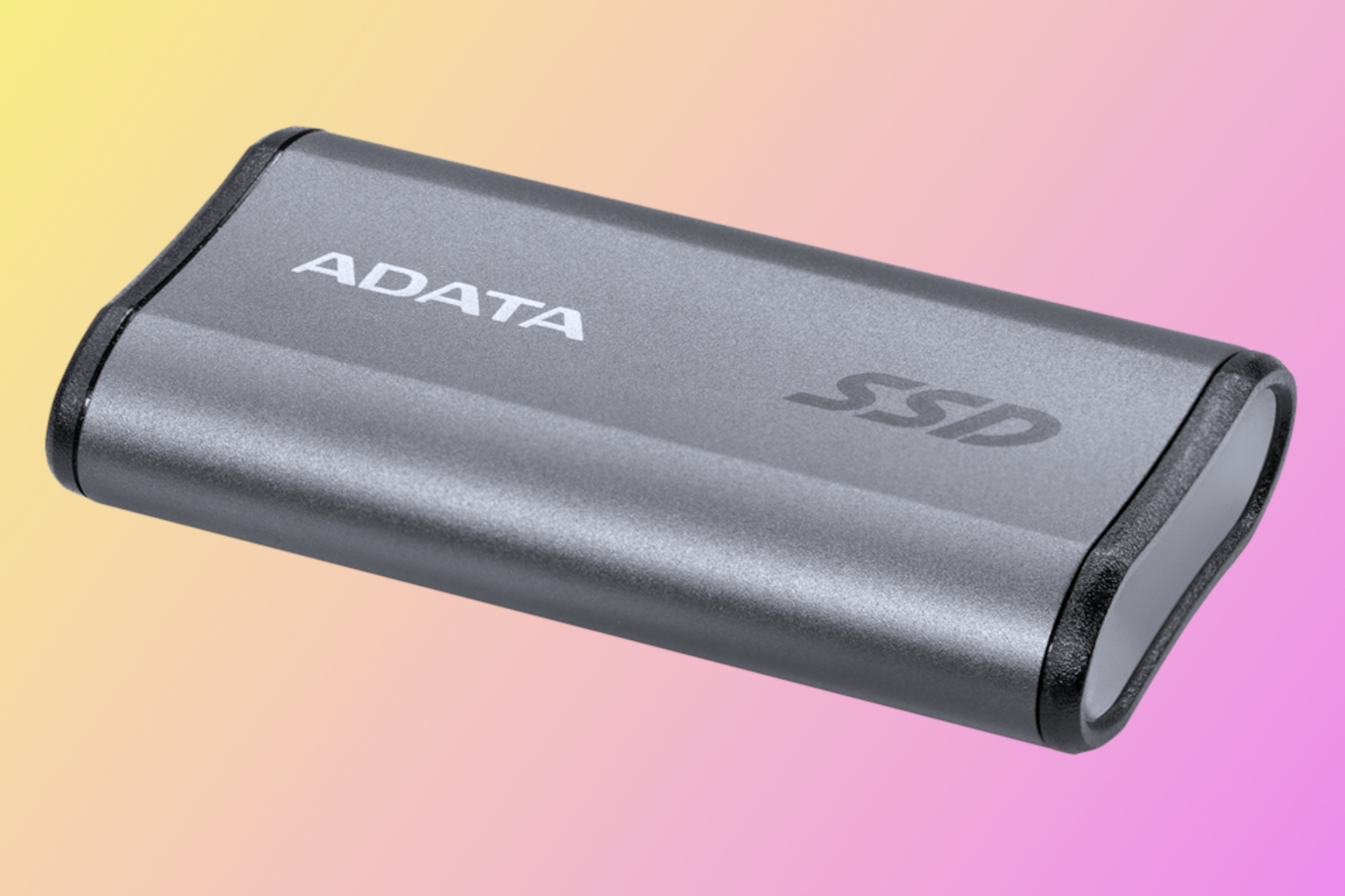
Pros
- Very fast, over-20Gbps USB connection
- Extremely small form factor
- 5-year warranty
Cons
- Slows considerably during long contiguous writes
- Somewhat low TBW rating
No external SSD we’ve seen can match Adata’s Elite SE880 for portability. Indeed, measuring only 2.55 inches long, 1.38 inches wide, and 0.48 inches thick, it reminds you more of a USB thumb drive than your standard external SSD. It also weighs a mere 1.1 ounces, so it vanishes from your consciousness in the pocket.
In real-world 48GB transfer tests, the Elite SD880 beat out quite a few of its competitors, though it lost significant ground in the longer 450GB write test. Photo and video pros with large files to transfer might want to consider speedier options.
Read our full
Adata Elite SE880 SSD review
Kingston XS200 USB SSD – Most portable high-capacity drive
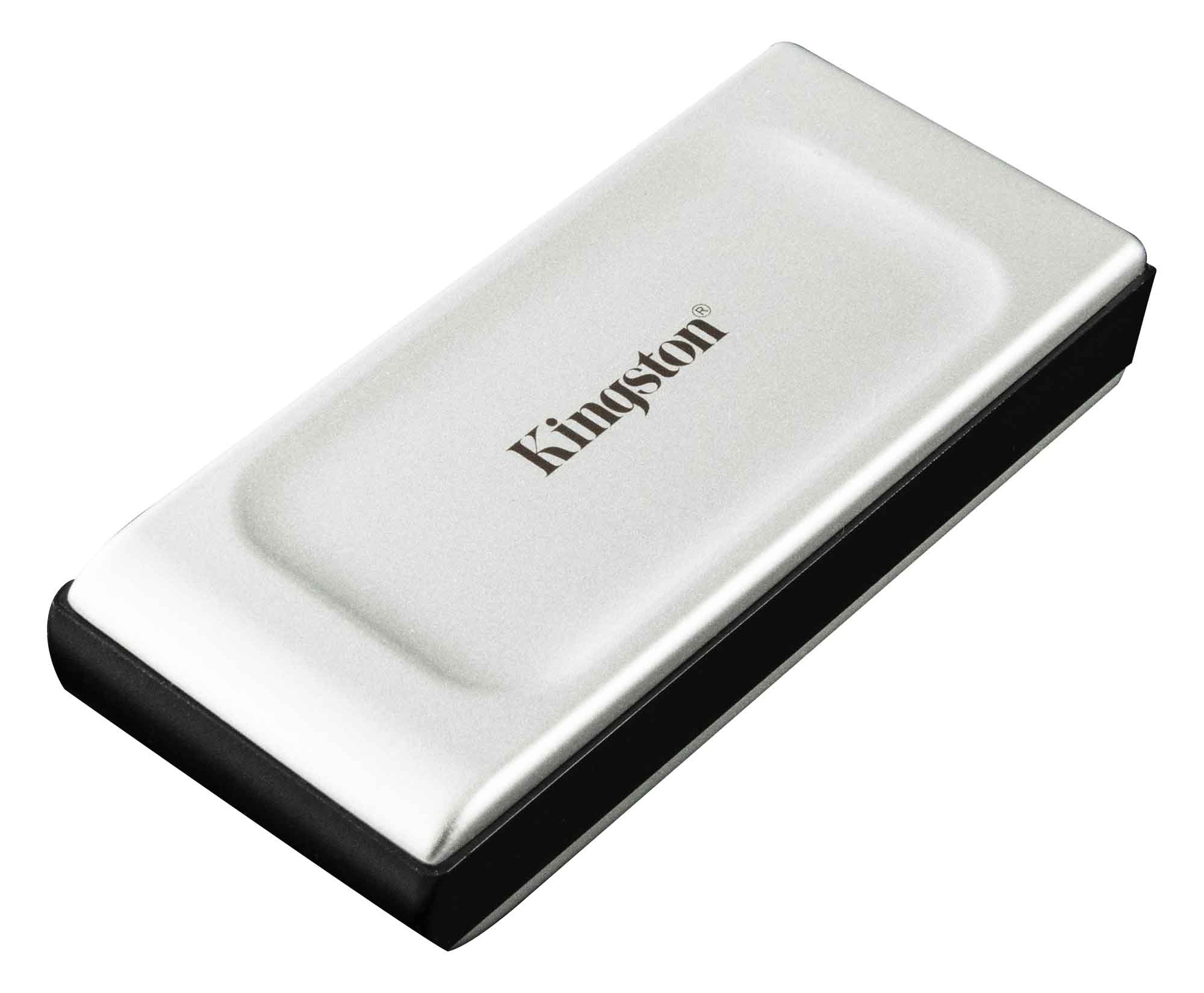
Pros
- Super svelte
- Good 20Gbps performance
- Available in up to 4TB in capacity
Cons
- Slower than much of the competition
- Not much of a looker
The Kingston XS2000 is an admirable blend of size, capacity, speed, and affordability. With up to 4TB in capacity, it is one of the most capacious drives that still fits in smaller pockets.
The XS2000 is a 20Gbps USB drive, and while it lagged as a reader compared to most of the 20Gbps competition, it beats the pants off of the 10Gbps drives in synthetic benchmarks and our 48GB transfers. The 450GB write was very slow, but overall, it’s a decently fast SSD and a solid product that offers a ton of storage in a very small form factor.
Note: Kingston sent us a updated version that solved its slow read performance in synthetic benchmarks. The 450GB write remained slow.
Read our full
Kingston XS200 USB SSD review
SanDisk Pro-G40 – Best USB/Thunderbolt combo
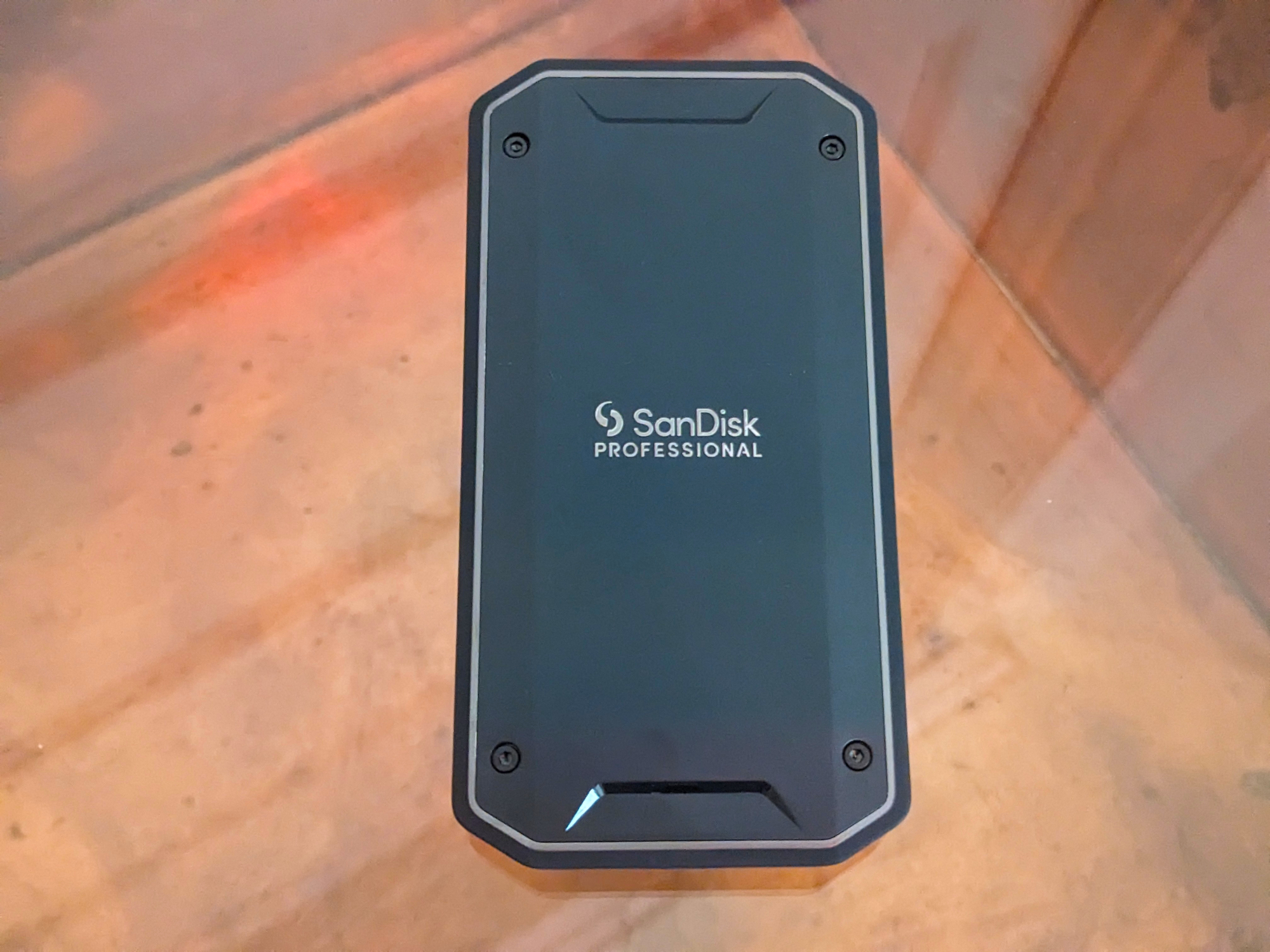
Pros
- Both 10Gbps and Thunderbolt 3/4 connectivity
- Fast, especially over Thunderbolt
- IP68 weather and dust resistant
For anyone who wants Thunderbolt’s scintillating 40Gbps performance as well as the ability to connect via ubiquitous USB (10Gbps), the SanDisk Pro-G40 is the drive to buy–it’s the fastest dual-bus drive that we’ve ever tested. The drive dominated the competition when connected via Thunderbolt with outstanding 48GB and 450GB transfers, and via USB was on par with the fastest 10Gbps drives.
The Pro-G40 is also rated at IP68 for weather and dust resistance, meaning it should be able to handle outdoor adventures if you decide to travel with it in your backpack. It’s a rather pricey drive, but Thunderbolt drives are never “cheap”. They are, however, absolutely worth it if pennies don’t matter as much as minutes. A fantastic drive.
Read our full
SanDisk Pro-G40 SSD review
WD My Passport 5TB – Best for backups

Pros
- Excellent cost per gigabyte
- Nice styling
- Comprehensive software suite
Cons
- Slower than average with large files
You want to know why we chose WD’s My Passport 5TB for backups? It’s right there in the name—that extra 1TB can be invaluable in this age of 4K/8K.
Read our full
WD My Passport 5TB review
Seagate Backup Plus Portable – Best for backups runner-up

Pros
- Up to 5TB in a 2.5-inch package
- Affordable
Cons
- Slow writing small files and folders
Like the WD above, Seagate’s Backup Plus Portable is a USB 3.1 Gen 1 (5Gbps) drive—5Gbps is plenty enough bandwidth for the hard drive inside–about three to four times what the HDD is capable of. Capacity tops out at 5TB, but the drive is also available in 1TB, 2TB, and 4TB capacities.
In our tests of the 4TB version, we found the Backup Plus Portable to be slightly faster than the WD My Passport 5TB with large file transfers (think movies), but slower with small file transfers (think Office documents). All in all, a worthy runner-up. Choose between the two by price.
Read our full
Seagate Backup Plus Portable review
What you need to know before you buy
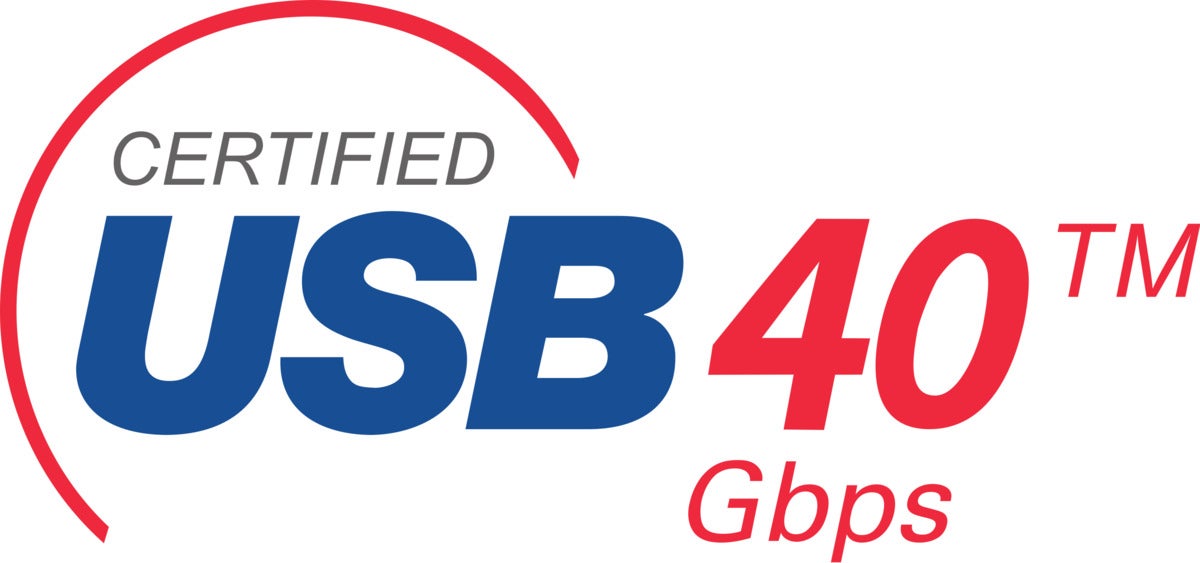
Yes, USB4 will provide the same massive throughput as Thunderbolt 3 at lower prices eventually, and likely far more products too.
Capacity versus price
For most consumers, the primary shopping criteria for external storage are capacity and price. However, while you might think that the lowest-cost drives provide the most value–they don’t. In fact, dollar for dollar, cheaper low-capacity drives have always been the worst deal in terms of price per terabyte.
You can see the phenomena in the charts below where we compare the popular WD Elements desktop hard drive’s available capacities and prices. You’re paying more than twice as much per terabyte for the lowest-capacity drive versus the next step up. It’s almost as bad on the WD Elements Portable drive.

The worst value for an external hard drive is typically the lowest-capacity drive.
IDG
The best “value,” as you can see, typically means the most capacious hard drives. But it also means higher total cost, and not everyone needs maximum capacity.
How much capacity do you need?
So how much storage do you actually need? For backup, we recommend a drive that’s at least twice the capacity of the total amount of data residing on your PC’s internal storage.
If you have 1TB of storage in your PC, a 2TB drive allows you to make a full backup while keeping previous versions, as well as additional differential and incremental backups. I.e., the larger the capacity, the more backups over a longer period of time you can keep, or the more PCs you can back up to the same drive.
While a desktop hard drive (read 3.5-inch) provides far more capacity (up to 26TB currently if you’re a data center), it also requires a power cable, weighs more, and generally won’t be as shock resistant as a portable 2.5-inch hard drive. The latter is designed to take bumps in a laptop, even when powered up. Then again, if you really want rugged–go the SSD route.
Interface
The vast majority of external drives today are USB drives. However, USB comes in many speeds: 5Gbps, 10Gbps, 20GBps, and—eventually with USB4—40Gbps as with Thunderbolt 3/4. Ignore the version number (3.x) and look for the speed.
The USB Forum has changed its nomenclature to indicate throughput speed—SuperSpeed USB 5Gbps (formerly USB 3.x gen 1), SuperSpeed USB 10Gbps (formerly USB 3.x gen 2), and SuperSpeed USB 20Gbps (formerly USB 3.2 2×2). For the sake of brevity (and our sanity), we generally shorten those to, for example, USB 10Gbps, 10Gbps USB, 10Gbps etc.
All USB hard drives use a slower standard, typically USB 5Gbps. No hard drive, unless combined with other drives in RAID 0 or above, can saturate even the 5Gbps interface (roughly 500MBps real-world after overhead). Because of that, you’ll never see one rated higher.
Where SuperSpeed 10Gbps/20Gbps, USB4, or Thunderbolt are of value is with the aforementioned RAID hard drive setups, or more likely—an SSD. USB 10Gbps is fast enough for most users, and getting cheaper by the week. A 10Gbps Samsung T7 Shield can be had for $100 in a 2TB capacity.
Faster USB 20Gbps (Gen 2×2) basically doubles speed but moves you into a higher-price bracket, with the Seagate Firecuda Gaming SSD costing $90 for only 500GB of storage. Although far faster than 5/10Gbps, there still aren’t a lot of USB 20Gbps/USB4 ports out there.
Thunderbolt 3 and the newer Thunderbolt 4 (almost exactly the same thing with stricter implementation requirements) are the highest-performing interfaces for external storage. The key negatives are the premium pricing and a general lack of compatibility with the far more popular USB.
That said, there are dual Thunderbolt/USB SSDs available such as the Sandisk Pro-G40. The G40 is pricey at $160 for 1TB, but a fantastic drive for those who can afford it. Pure Thunderbolt external SSDs can be even pricier, as they’re almost all sold by Mac-oriented boutique vendors such as OWC and Sabrent.

The top drive uses the older, slower Mini-USB interface. The second drive features the connector that replaced it: Micro B SuperSpeed. The Orange drive features both a SuperSpeed Micro B and Thunderbolt 2 (mini DisplayPort connector). The bottom drive features USB-C or USB Type C.
Ports
External drives come with a variety of ports, though they’re gradually (and thankfully) consolidating on the orientation-agnostic Type-C connector. Here’s the list of connectors you might see on your drive:
USB 3 Micro-B — This wider, flatter port is still very common on many lower-cost portable and desktop external hard drives. It’s actually the same Micro USB port used on your phone, but with more data lines to hit USB 3.0 speeds. It’ll do 5Gbps and is fine for hard drives and SATA (internally) SSDs. Micro-B cables are generally Type-A on the PC end.
USB 3 Type-B is the larger, squarer version of USB 3.0 Micro B. Type B ports are becoming rare, though you might find one on older 5.25-inch enclosures, printers, and scanners. It supports speeds up to 5Gbps and cables are generally Type-A on the PC side.
USB Type-C or simply Type-C is the latest USB connector and the one the world is standardizing on. It’s small, easy to insert, and you don’t have to worry about which side faces up as with Type-A.
Keep in mind that Type-C refers only to the connector itself. What is carried over the wires varies greatly: USB 2.0 High Speed (480Mbps) to USB 3.2 SuperSpeed 20Gbps, as well as USB4 and Thunderbolt 3 and any combination of them.
USB Type-A You won’t find this familiar rectangular port on any drive, but you will still find it on plenty of PCs and laptops as well as the male version on the other end of most Type-B and Type-C adapter cables.
Thunderbolt 2 is dead at this point. It’s found on older Macs, but even Apple put it out to pasture in 2017. There’s no need to invest in a Thunderbolt 2 drive unless it’s for legacy support issues. That said…
…Apple sells a bi-directional Thunderbolt 1/2 to 3 adapter if you need to connect the one generation to the other. The adapter does not, however, carry power, so bus-powered external drives (no power jack) will require a powered dock.
eSATA is another legacy port that’s disappeared from newer tech. Created for attaching external storage to your computer’s SATA bus, eSATA was a cheap way in its day to move beyond the toddling 60MBps performance of USB 2.0.
5Gbps USB 3.0 put the last nail in eSATA’s coffin. As with Thunderbolt 2, the only reason to invest in an eSATA drive is for use with older computers.
Two drives for backup?
There’s a fundamental maxim in backup, appropriately named the Rule of Three. It states that you should always maintain three copies of your irreplaceable data: the original data, a backup, and a backup of the backup.
Preferably, the two backups are kept in separate locations, one being offsite (online, or another location). Keeping a copy online is great for smaller amounts of data and certainly meets the offsite criteria.
However, for vast photo, audio, and/or video collections, external drives in pairs (or more), are a far faster solution. Especially with most broadband still being relatively limited in upstream speed.
For guidance on building out the best backup plan possible, see our roundups of the best cloud backup services and best Windows backup software.
How we test
Some of the older reviews you might find here feature results gathered on an Intel Core i7-5820K/X99 motherboard with 64GB of Kingston DDR4 memory running Windows 10. A discrete Gigabyte Alpine Ridge Thunderbolt 3 card and Ableconn USB 3.2 2×2 20Gbps card (Asmedia 2142 controller) were used for connecting the external drives. An Asus USB 3.1/10Gbps (Asmedia 1142 controller) card was employed for some of the really old drives on the chart.
Subsequently, drives were tested using Windows 11 64-bit running on an MSI MEG X570/AMD Ryzen 3700X combo with four 16GB Kingston 2666MHz DDR4 modules, a Zotac (Nvidia) GT 710 1GB x2 PCIe graphics card, and the Asmedia ASM3242 USB 3.2×2 card. Copy tests utilize an ImDisk RAM disk using 58GB of the 64GB total memory.
Currently, we’re using Windows 11 64-bit running on an X790 (PCIe 4.0/5.0) motherboard/i5-12400 CPU combo with two Kingston Fury 32GB DDR5 4800MHz modules (64GB of memory total). Both 20Gbps USB and Thunderbolt 4 are on the board and Intel integrated graphics are employed. The 48GB transfer tests utilize an ImDisk RAM disk taking up 58GB of the 64GB of total memory. The 450GB file is transferred from a Samsung 990 Pro 2TB which also runs the OS.
We run various synthetic benchmarks including Crystal Disk Mark 6/7/8, AS SSD 2, and Iometer. We also perform real-world transfer tests using a 48GB batch of small files and folders, as well as a large 48GB and 450GB files. The testbed boots from a NVMe drive, but the real-world (Windows) file transfers are performed to and from a 58GB RAM disk.
Note that all review charts feature results garnered from the same test bed.
External drive FAQ
What is the difference between an SSD and an HDD?
HDDs (hard disk drives) have been around for more than 50 years. They are essentially boxes containing spinning platters with read/write arms that skim across them to detect the orientation of, or re-align particles in, the magnetic material that coats the platters.
SSDs (solid state drives), on the other hand, use flash memory and have no moving parts inside the drive. Data is instead stored in cells—aka, voltage traps—which are interconnected in a matrix. The matrix approach allows for data to be pushed or pulled to/from many different places at once and significantly increases both read and write speed. On the order of 100 times faster these days.
Generally speaking, SSDs are a better bet for your external drives due to their smaller size, faster speeds, and far superior ruggedness and durability. The main drawback to SSDs is that you pay quite a bit more per terabyte of storage. As technology and production techniques improve, the price of SSDs has and will continue to drop.